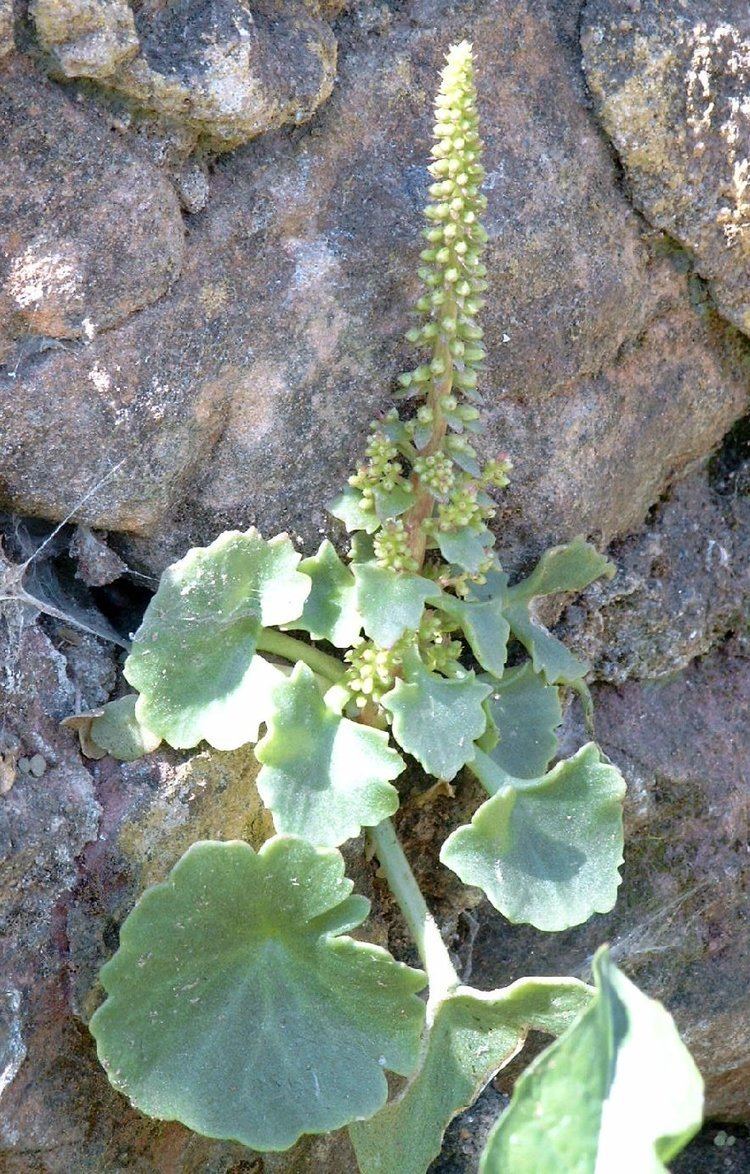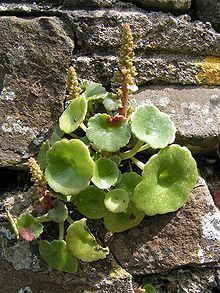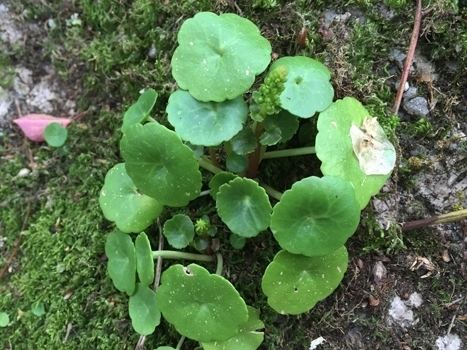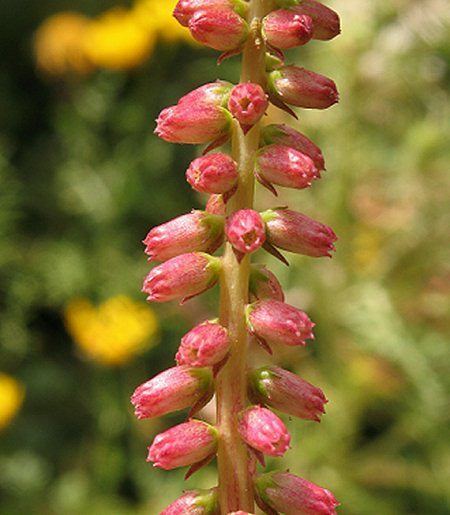Scientific name Umbilicus rupestris Rank Species | Genus Umbilicus Higher classification Umbilicus | |
 | ||
Similar Umbilicus, Crassulaceae, Umbilicus horizontalis, Omphalodes, Omphalodes cappadocica | ||
My navelwort plants umbilicus rupestris in flower
Umbilicus rupestris (Navelwort, Penny-pies, Wall Pennywort) is a fleshy, perennial, edible flowering plant in the stonecrop family Crassulaceae (in the genus Umbilicus) so named for its umbilicate (navel-like) leaves.
Contents
- My navelwort plants umbilicus rupestris in flower
- Potting up wild irish navelwort umbilicus rupestris succulent plants
- Distribution
- Medicinal usage
- Properties
- References

Wall pennywort grows to an average of 25 cm (9.8 in) high. The pallid spikes of bell-shaped, greenish-pink flowers of this plant first appear in May, and the green fruits ripen through the summer.

Both the name "navelwort" and the scientific name Umbilicus come from the round shape of the leaves, which have a navel-like depression in the center.

Potting up wild irish navelwort umbilicus rupestris succulent plants
Distribution

The plant is found in southern and western Europe, often growing on shady walls or in damp rock crevices that are sparse in other plant growth (thus, "wall" pennywort), where its succulent leaves develop in rosettes.
It is not at present under threat.
Medicinal usage

Umbilicus rupestris is not the same "Pennywort" as the one used in Asian medicine, which is the unrelated Asiatic Pennywort, Centella asiatica.

Umbilicus rupestris is used in homeopathic medicine. Navelwort is referred to as Cotyledon umbilicus by Homeopaths, since that was the original scientific name of navelwort when Homeopathy was developed.
Navelwort is also assumed to be the "Kidneywort" referred to by Nicholas Culpepper in the English Physician, although it may actually refer to the unrelated Anemone hepatica. Culpepper used astrology, rather than science, to classify herbs, and as such is not a reliable source. He claimed: "the juice or the distilled water being drank, is very effectual for all inflammations and unnatural heats, to cool a fainting hot stomach, a hot liver, or the bowels: the herb, juice, or distilled water thereof, outwardly applied, heals pimples, St. Anthony's fire, and other outward heats. The said juice or water helps to heal sore kidneys, torn or fretted by the stone, or exulcerated within; it also provokes urine, is available for the dropsy, and helps to break the stone. Being used as a bath, or made into an ointment, it cools the painful piles or hæmorrhoidal veins. It is no less effectual to give ease to the pains of the gout, the sciatica, and helps the kernels or knots in the neck or throat, called the king's evil: healing kibes and chilblains if they be bathed with the juice, or anointed with ointment made thereof, and some of the skin of the leaf upon them: it is also used in green wounds to stay the blood, and to heal them quickly."
